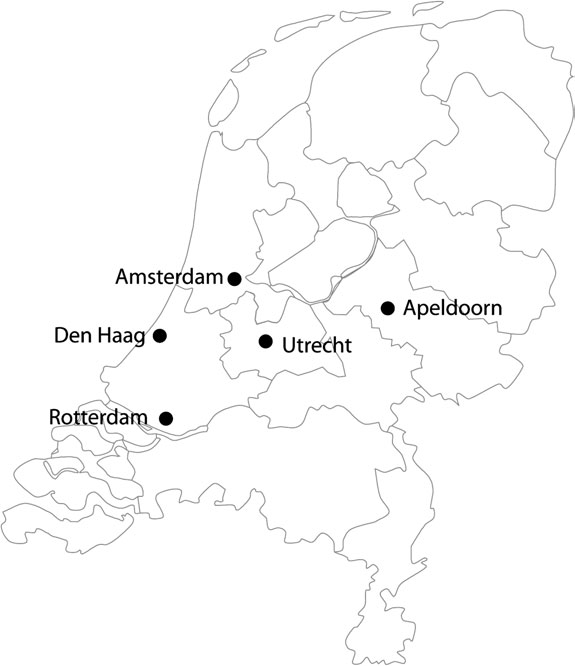Colorwatch report form.qtxt
Colorwatch For VOLUNTARY reporting of adverse (migration) or allergic reactions to pigments used in permanent makeup. The AAM Safety Information and Adverse Event Reporting Program Mail to: PARR, 1087 Keolu Drive, Kailua, HI 96734 DClient ID PARR: Pigment Adverse Reaction Report A. Technician Information / Identifier Phone Number B. Patient (Client) Information G. Susp
 Family Practice—The International Journal for Research in Primary Care
Details of the SLIMMER lifestyle intervention programme
Lifestyle intervention programme—1 year
Six times/year individual nutrition advice by dieticianBased on Dutch dietary guidelinesOne group session on label readingGoal: 5–10% weight reduction
Weekly group sessions by physiotherapistCombined aerobic- and resistance exercise programmeIndividual advice on physical activity in daily lifeGoal: increase physical activity to at least 30 minutes/day on at least5 days/week
per visit; in total 4 hours/year per participant) based
on the Dutch guidelines for a healthy diet 2006.Indi-vidual consults instead of group-based consults areused because this is in accordance with the Dutch reg-ular primary health care. The Dutch guidelines for
Map of the Netherlands with pilot municipality
a healthy diet refer to a carbohydrate intake of >50%of energy consumed (E%), a total fat intake of 30–35
for Dutch real-life setting in general. The three selected
E%, a saturated fat intake of <10 E%, a fibre intake
GPs were assumed to be representative for their profes-
of >30 g/day and a protein intake of 1.2 g/kg body
sional group in Apeldoorn and are considered as local
weight per day. Topics that are being discussed during
pioneers in the field of diabetes prevention. Each GP
visits are the Dutch guidelines for a healthy diet, artifi-
selected a sample of patients aged 40–65 years with im-
cial sweeteners and special occasions, e.g. a party. If
paired fasting glucose (fingerprick fasting capillary
desired, spouses can join the visits. In addition, the di-
blood glucose >5.6 and <6.0 mmol/l or fasting venous
etician organizes a group session aimed at sharing ex-
plasma glucose >6.1 and <6.9 mmol/l). Exclusion crite-
periences, motivating each other and discussing the
ria were: not being able to speak the Dutch language;
topic of label reading. Subjects are being encouraged
cognitive dysfunction or any co-morbidity that made
to quit smoking, and if necessary, drink less alcohol.
Family Practice—The International Journal for Research in Primary Care
Details of the SLIMMER lifestyle intervention programme
Lifestyle intervention programme—1 year
Six times/year individual nutrition advice by dieticianBased on Dutch dietary guidelinesOne group session on label readingGoal: 5–10% weight reduction
Weekly group sessions by physiotherapistCombined aerobic- and resistance exercise programmeIndividual advice on physical activity in daily lifeGoal: increase physical activity to at least 30 minutes/day on at least5 days/week
per visit; in total 4 hours/year per participant) based
on the Dutch guidelines for a healthy diet 2006.Indi-vidual consults instead of group-based consults areused because this is in accordance with the Dutch reg-ular primary health care. The Dutch guidelines for
Map of the Netherlands with pilot municipality
a healthy diet refer to a carbohydrate intake of >50%of energy consumed (E%), a total fat intake of 30–35
for Dutch real-life setting in general. The three selected
E%, a saturated fat intake of <10 E%, a fibre intake
GPs were assumed to be representative for their profes-
of >30 g/day and a protein intake of 1.2 g/kg body
sional group in Apeldoorn and are considered as local
weight per day. Topics that are being discussed during
pioneers in the field of diabetes prevention. Each GP
visits are the Dutch guidelines for a healthy diet, artifi-
selected a sample of patients aged 40–65 years with im-
cial sweeteners and special occasions, e.g. a party. If
paired fasting glucose (fingerprick fasting capillary
desired, spouses can join the visits. In addition, the di-
blood glucose >5.6 and <6.0 mmol/l or fasting venous
etician organizes a group session aimed at sharing ex-
plasma glucose >6.1 and <6.9 mmol/l). Exclusion crite-
periences, motivating each other and discussing the
ria were: not being able to speak the Dutch language;
topic of label reading. Subjects are being encouraged
cognitive dysfunction or any co-morbidity that made
to quit smoking, and if necessary, drink less alcohol.